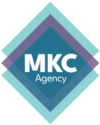At MKC Agency, inclusivity is key, especially in the online space. As a nonprofit organization, it’s crucial to ensure that your website is accessible to all, regardless of any disabilities. But how do you know if your website is accessible? Well, fear not – we’ve got you covered! In this article, we’ll explore some of the top tools for testing your nonprofit website’s accessibility so that you can create a welcoming and inclusive space for all your visitors.
Manual Testing Tools
Manual testing tools rely on individuals with disabilities to test your website’s accessibility. These individuals can provide valuable feedback on the user experience for people with various disabilities, such as blindness or motor impairments.
UserWay
UserWay is an accessibility widget that provides a variety of accessibility tools. This tool helps make your website more accessible and allows users to adjust it to suit their needs.
A11Y Project
A11Y Project is an open-source project that provides a comprehensive checklist for testing web accessibility. This tool provides an extensive list of accessibility requirements that you can use to ensure that your website meets accessibility standards.
Automated Testing Tools
Automated testing tools use software to scan your website and identify accessibility issues. These tools can quickly identify common accessibility errors, such as missing alt text or color contrast issues.
WAVE
WAVE is an online accessibility testing tool that can help identify accessibility issues on your website. This tool can identify issues related to contrast, alt text, and other accessibility issues that may affect users with disabilities.
Google Lighthouse
Google Lighthouse is a website auditing tool that comprehensively analyzes your website. This tool can identify accessibility issues and other issues such as site speed, SEO, and security.
Tools for Specific Accessibility Issues
Depending on your website’s content and design, you may encounter specific accessibility issues. Luckily, there are tools designed to tackle these issues head-on.
YouTube Automatic Captions
If your website includes videos, you can use YouTube’s automatic captions to ensure that all viewers can understand the content. This tool provides automated captions for your videos, making them accessible to users who are deaf or hard of hearing.
Color Contrast Analyzers
Tools like Contrast Checker by WebAIM or Contrast Ratio by Tanaguru can help you determine if your website’s color combinations meet the contrast standards set by the Web Content Accessibility Guidelines (WCAG).
Screen Reader Simulators
Tools like Fangs Screen Reader Emulator or NVDA can help you simulate how users with visual impairments navigate and interact with your website using a screen reader.
Voice Recognition Software
Software like Dragon NaturallySpeaking or Google Voice Typing can help users with motor impairments navigate your website by using voice commands instead of a mouse or keyboard.
Captioning and Transcription Services
For videos or audio content on your website, you can use services like Rev or 3Play Media to provide accurate captions and transcripts, making them accessible to users who are deaf or hard of hearing.
Conclusion
By utilizing these accessibility testing tools, you can ensure that your nonprofit website is accessible to all users, regardless of their abilities. At MKC Agency, we’re committed to making the online space more inclusive for everyone. If you have any questions or want to ensure that your website is accessible, don’t hesitate to contact us. We’re here to help you create an accessible and welcoming online space for all.

